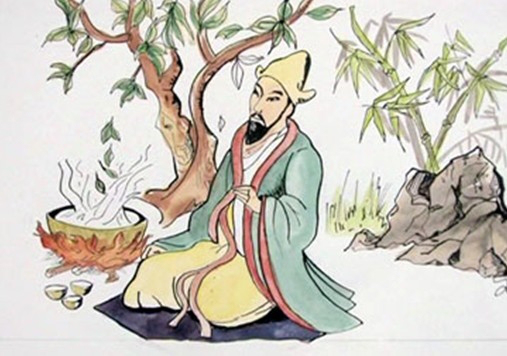THE TALE OF BIRTH OF TEA
Tea, a beverage that is currently ranked second in consumption around the globe, has many interesting antidotes in its 5,000-year history that has its roots in China. From its discovery to its current production, tea is a drink that spans the globe and sparks intrigue among the curious. But with spam of time the culture of tea has changed a lot which is actually a great loss and MindGym is trying to keep it alive with the same values and traditions and taste as it used to be thousands of years ago.
THE DISCOVERY OF TEA
Tea is said to have been discovered some 5,000 years ago. While there is documentation and evidence to support these claims, there are many different variations on how the drink actually came into existence.
One version has Shien Non Shei, a typical Chinese man, out walking when he accidentally tastes the leaves of the camellia sinensism or tea plant. Intrigued by the taste, he wondered if the leaves might also have medicinal value. The juices of the plant intrigued him to the point that he boiled the plant in water to release the juices and thus created tea.
Another tale has Shen Nung, a Chinese Emperor, drinking a hot cup of water one day speculating about the state of affairs. A blossom from the camellia sinensism fell into his cup and flavored his drink with the unmistakable taste of tea. The rest, as they say, is history.

THE MEDICINAL VALUE OF TEA
Green tea, which was the only kind available for thousands of years, was used as a medicine in China, Japan, India and Thailand to help control bleeding, help wounds heal, regulate body temperature, regulate blood sugars and improving digestion. Today, green tea is used by many for similar treatments although some claimed treatment methods are still speculative - such as losing ten pounds in a matter of weeks simply by drinking green tea.
Thousands of years ago, the wealthy and eventually the poor in China began drinking green tea to promote digestion and soothing the nervous system. After years of indulging, many in the Western world are just discovering that the ancient people were right, although not every claim has been shown to be correct by regulating bodies such as the FDA as yet.
THE INTRODUCTION OF FERMENTED TEAS
While green tea, or tea leaves left essentially alone, was the standard for thousands of years, oolong and then black tea were introduced in the seventeenth century. Oolong is a slightly fermented version of green tea using the same tea leaves and black tea, which is also called red tea, is a fully fermented version.
While it's unlikely to ever be proven, it is rumored that oolong and black tea were introduced as a means to drink tea without suffering from the weight loss induced by green tea. While green tea is sought after for weight loss today, three hundred years ago, many of the Chinese needed to store fat on their bodies to protect them from lean times. Drinking a tea frequently that reduced body fat was counterproductive, so many were alleged to have switched to oolong, as the fermented varieties of tea do not promote the weight loss that green tea does. Oolong is still the most popular tea in China.
From the article its obvious that China is unrivaled source of tea history, but even in China these days it is quite difficult to find places where you can experience the natural pure tea from thousand years old trees, a soothing spot for experiencing a cup of such the with a blend of Chinese tea culture, MindGym was created with moto of catering these needs of people all over the globe. We welcome our friends from all over the world to come join us and enjoy a cup of most prestigious tea with us in traditional Chinese environment.
